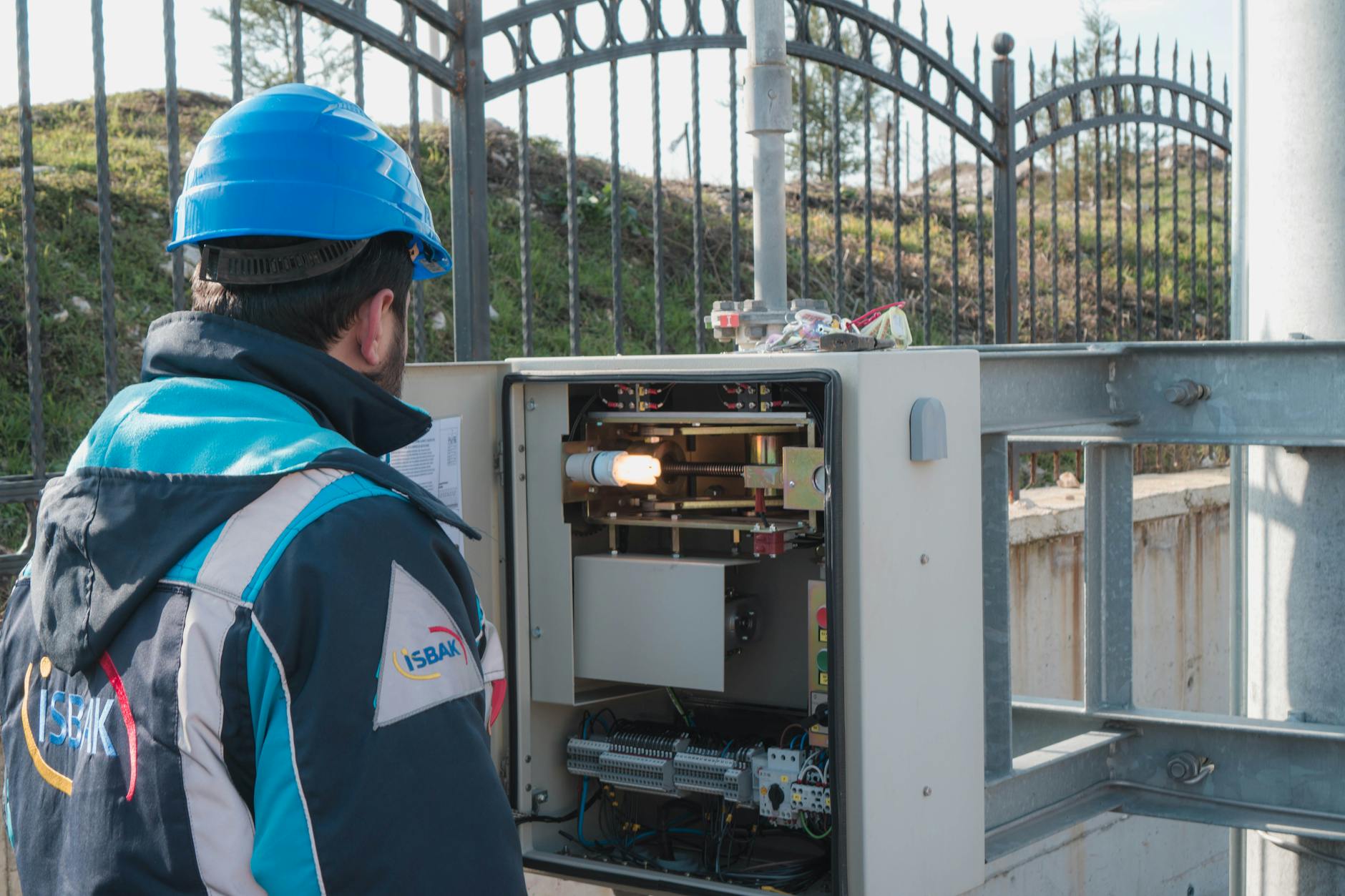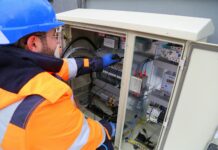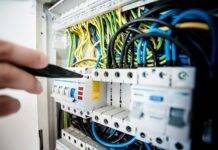
Electrical Safety: Protecting Lives and Property
Electricity powers our modern world, but it also poses significant hazards if not handled with care. From electric shock to fires and arc flashes, the risks associated with electrical systems are real and potentially life-threatening. In this article, we’ll delve into the importance of electrical safety and explore practical measures to prevent accidents and injuries.
Introduction to Electrical Safety
Importance of Electrical Safety
Electrical safety is paramount in both residential and commercial settings. Neglecting safety protocols can result in severe injuries, property damage, and even fatalities. By understanding and adhering to safety guidelines, individuals can protect themselves, their families, and their assets from electrical hazards.
Common Electrical Hazards
Electricity can pose various hazards, including electric shock, electrical fires, and arc flashes. These dangers underscore the critical need for vigilance and proactive safety measures.
Understanding Electrical Hazards
Electric Shock
Electric shock occurs when the body comes into contact with an electric current. The severity of the shock depends on factors such as voltage, current, and duration of exposure. Even low-voltage shocks can be dangerous, causing muscle contractions, burns, and cardiac arrest.
Electrical Fires
Faulty wiring, overloaded circuits, and malfunctioning appliances can lead to electrical fires. These fires spread quickly and can engulf entire buildings if not promptly extinguished. Prevention and early detection are essential in mitigating the risk of electrical fires.
Arc Flashes
An arc flash is a sudden release of energy due to an electrical fault, resulting in an explosive discharge of intense heat and light. Arc flashes can cause severe burns, vision impairment, and even death. Proper safety protocols and protective equipment are crucial in minimizing the risk of arc flash incidents.
Preventing Electric Shock
Inspecting Electrical Cords and Outlets
Regularly inspecting electrical cords and outlets for signs of wear or damage can help prevent electric shock accidents. Replace damaged cords and outlets promptly to eliminate potential hazards.
Using Ground Fault Circuit Interrupters (GFCIs)
GFCIs are electrical safety devices designed to protect against electric shock by quickly shutting off power in the event of a ground fault. Install GFCIs in areas prone to moisture, such as kitchens, bathrooms, and outdoor spaces.
Avoiding Water Near Electrical Appliances
Water and electricity are a dangerous combination. Keep electrical appliances away from water sources and ensure hands are dry when handling them. Never operate electrical devices with wet hands.
Preventing Electrical Fires
Proper Use of Extension Cords
Extension cords should be used temporarily and never as a permanent solution for powering appliances or devices. Avoid running cords under carpets or rugs, as this can cause overheating and increase the risk of fire.
Avoiding Overloading Circuits
Overloading circuits by connecting too many appliances to a single outlet can lead to overheating and electrical fires. Distribute electrical loads evenly across multiple outlets and circuits to prevent overload.
Regular Maintenance of Electrical Systems
Regular maintenance, including inspection of wiring, panels, and appliances, can identify potential fire hazards before they escalate. Schedule professional inspections and address any issues promptly to ensure the safety of your electrical system.
Protection Against Arc Flashes
Arc Flash Hazard Analysis
Conducting an arc flash hazard analysis can help identify potential risks and develop appropriate safety measures. Assessing equipment, operating conditions, and protective measures is essential in mitigating the risk of arc flashes.
Personal Protective Equipment (PPE)
Workers exposed to arc flash hazards must wear appropriate PPE, including flame-resistant clothing, face shields, and insulated gloves. Providing and maintaining quality PPE is crucial in safeguarding employees against arc flash injuries.
Training and Awareness
Education and training are key components of arc flash prevention. Ensure workers understand the risks associated with arc flashes and are trained to recognize warning signs and respond appropriately in the event of an incident.
Safety Measures for Electrical Appliances
Checking for Damage Before Use
Inspect electrical appliances for damage or defects before each use. Frayed cords, loose plugs, and exposed wires pose significant safety hazards and should be repaired or replaced immediately.
Unplugging Appliances When Not in Use
When not in use, unplug electrical appliances to prevent them from consuming standby power and reduce the risk of electrical fires. This practice also extends the lifespan of appliances and reduces energy costs.
Using Appliances According to Manufacturer Instructions
Follow manufacturer instructions for proper use and maintenance of electrical appliances. Overlooking safety guidelines can compromise performance and increase the likelihood of accidents.
Safety Guidelines for Electrical Work
Hiring Qualified Electricians
Electrical work should be performed by licensed and experienced professionals to ensure compliance with safety standards and regulations. Hiring qualified electricians minimizes the risk of electrical accidents and ensures work is done safely and effectively.
Following Safety Protocols and Standards
Adhering to established safety protocols and standards is essential when performing electrical work. This includes using appropriate tools and equipment, following lockout/tagout procedures, and implementing proper grounding techniques.
Using Insulated Tools and Equipment
Insulated tools and equipment protect workers from electrical shock and arc flash hazards by preventing direct contact with live electrical components. Inspect tools regularly and replace any damaged or worn-out items.
Safety in Wet or Damp Environments
Installing Appropriate Electrical Outlets
Install ground fault circuit interrupters (GFCIs) in areas where water is present, such as kitchens, bathrooms, and outdoor spaces. GFCIs help prevent electric shock by quickly cutting off power in the event of a ground fault.
Using Weatherproof Covers for Outdoor Outlets
Outdoor electrical outlets should be equipped with weatherproof covers to protect against moisture and debris. Regularly inspect covers for damage and replace them as needed to maintain safety.
Using Portable GFCIs in Wet Areas
When working in wet or damp environments, use portable GFCIs to provide additional protection against electric shock. These devices are easy to install and provide an extra layer of safety for workers.
Educating Children about Electrical Safety
Teaching Basic Safety Rules
Educate children about basic electrical safety rules, such as not playing with electrical outlets or cords and never touching electrical appliances with wet hands. Reinforce these rules through regular discussions and demonstrations.
Keeping Electrical Devices out of Reach
Store electrical devices, such as hairdryers, curling irons, and power tools, out of reach of young children to prevent accidents and injuries. Use outlet covers and cord organizers to minimize accessibility.
Supervising Children around Electrical Appliances
Supervise children closely when they are near electrical appliances or outlets, especially in potentially hazardous areas like kitchens and bathrooms. Teach children to respect electricity and avoid dangerous behaviors.
Emergency Preparedness
Creating an Emergency Plan
Develop an emergency plan that includes procedures for responding to electrical emergencies, such as fires, shocks, or power outages. Ensure all family members are familiar with the plan and know how to evacuate safely if necessary.
Knowing How to Shut off Electricity
Identify the location of the main electrical panel and learn how to shut off electricity in the event of an emergency. Label circuit breakers or fuses clearly to facilitate quick and easy access during an emergency.
Having a First Aid Kit and Fire Extinguisher
Keep a well-stocked first aid kit and fire extinguisher in your home or workplace to deal with electrical emergencies effectively. Train family members or employees on how to use these lifesaving tools safely.
Workplace Electrical Safety
OSHA Regulations and Compliance
Employers must comply with Occupational Safety and Health Administration (OSHA) regulations to ensure a safe working environment for employees. OSHA standards cover various aspects of electrical safety, including equipment maintenance, training, and hazard communication.
Workplace Safety Training
Provide comprehensive training to employees on electrical safety practices, including hazard recognition, proper use of PPE, and emergency procedures. Regular training sessions and refresher courses help reinforce safety protocols and reduce the risk of workplace accidents.
Reporting and Addressing Hazards
Encourage employees to report electrical hazards promptly and take immediate action to address them. Conduct regular inspections and maintenance to identify and correct potential safety issues before they escalate into serious incidents.
Electrical Safety in Construction Sites
Risk Assessment and Planning
Conduct a thorough risk assessment of construction sites to identify electrical hazards and develop appropriate safety measures. Implement a comprehensive safety plan that addresses equipment, procedures, and personnel training.
Proper Use of Temporary Power Systems
Temporary power systems used on construction sites should be installed and maintained according to safety standards and regulations. Avoid overloading circuits and ensure proper grounding to minimize the risk of electrical accidents.
Implementing Lockout/Tagout Procedures
Implement lockout/tagout procedures to control hazardous energy during construction activities. This involves isolating electrical sources, securing them with locks or tags, and verifying that they are de-energized before performing maintenance or repairs.
Electrical Safety in the Healthcare Industry
Safe Use of Medical Devices
Healthcare facilities must adhere to strict safety protocols when using medical devices powered by electricity. Regular maintenance and testing of equipment are essential to ensure reliability and patient safety.
Grounding and Isolation of Equipment
Proper grounding and isolation of electrical equipment are critical in healthcare settings to prevent electric shock and equipment malfunction. Implementing redundant safety measures and conducting regular inspections help mitigate the risk of electrical hazards.
Training Healthcare Staff on Electrical Safety
Provide comprehensive training to healthcare staff on electrical safety procedures, including proper use of medical devices, handling of electrical emergencies, and infection control measures. Regular drills and simulations help prepare staff for real-life scenarios.
The Role of Technology in Electrical Safety
Advancements in Circuit Protection Devices
Technological advancements have led to the development of more sophisticated circuit protection devices, such as arc fault circuit interrupters (AFCIs) and ground fault circuit interrupters (GFCIs). These devices provide enhanced safety features and help prevent electrical fires and shocks.
Smart Home Technology for Monitoring Electrical Systems
Smart home technology enables homeowners to monitor and control their electrical systems remotely, reducing the risk of accidents and improving energy efficiency. Features such as real-time alerts and automated shut-off mechanisms enhance safety and convenience.
Remote Diagnostics and Maintenance
Remote diagnostics and maintenance capabilities allow electricians to identify and address electrical issues without being physically present on-site. This minimizes downtime, reduces costs, and improves overall system reliability.
Conclusion
Electrical safety is a shared responsibility that requires vigilance, knowledge, and proactive measures. By understanding the risks associated with electricity and implementing appropriate safety measures, individuals and organizations can prevent accidents, protect lives, and safeguard property. Remember, when it comes to electrical safety, it’s better to be safe than sorry.
Electrical Grounding: Unraveling the Importance and Essential Techniques
Electrical Cord Management: Safeguarding Against Overloading and Tripping Hazards
Electrical Cord Safety: Inspection and Replacement Guidelines
Electrical Safety: Hazards and GFCI Purpose
Electrical Safety for Non-Electricians: Building Basic Awareness and Precautions
FAQs (Frequently Asked Questions)
1. What are the most common causes of electrical fires?
- Electrical fires are often caused by faulty wiring, overloaded circuits, and malfunctioning appliances.
2. How can I protect my home from electrical hazards?
- Inspect electrical cords and outlets regularly, use GFCIs in wet areas, and avoid overloading circuits to minimize the risk of electrical accidents.
3. Why is it important to hire qualified electricians for electrical work?
- Qualified electricians have the training and expertise to perform electrical work safely and effectively, reducing the risk of accidents and ensuring compliance with regulations.
4. What should I do in case of an electrical emergency?
- In case of an electrical emergency, such as a fire or electric shock, evacuate the area immediately and call emergency services. If safe to do so, shut off electricity at the main panel.
5. How often should I test my smoke alarms and GFCIs?
- Test smoke alarms and GFCIs monthly to ensure they are functioning correctly. Replace batteries in smoke alarms and test GFCIs by pressing the “test” button regularly.
























